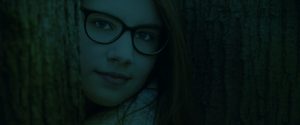Are you concerned that your child needs stronger eyeglasses?
Myopia is not only blurry vision but can also lead to serious sight-threatening eye diseases.
Myopia typically develops in childhood as a result of the eye growing too long from front to back (axial length). Myopia causes an inability to see distant images and objects clearly, such as the board in the classroom, the TV screen across the room, or the clock on the wall.
A myopic eye focuses an image at the front of the retina, instead of directly on the retina, causing blurry distant vision. Myopia can be corrected using corrective eyeglasses or contact lenses and is noted on the eye doctor’s optical prescription by a negative sign, such as -1.00 or -2.25.
Myopia can be inherited, or can be caused by lifestyle habits. The condition tends to worsen as children grow older, as their eyes continue to grow too.
The increasing prevalence of myopia
Over the past 20 years, the number of children with myopia has increased significantly.
In Asia up to 90 percent of children are now myopic, and in the U.S., the number of children with myopia will increase from 39 million in 2020 to 45 million by 2050.
Higher levels of myopia lead to higher risks of developing vision-threatening eye diseases.
The good news is, with regular eye exams, vision therapy, and myopia management, your child can regain clear vision, while decreasing their risk of developing ocular disease.
Conact an eye doctor near you to discuss the best options to correct your child’s myopia and discuss the management of this condition.
SEE RELATED: Myopia and Vision Therapy
What causes myopia progression?
The main cause of myopia progression is an increase in the eye’s axial length.
Many factors can contribute to this:
- Wearing glasses all day, everyday could potentially lead to myopia worsening. If a child has low myopia, glasses should only be worn sometimes, for activities such as watching TV or playing sports. Glasses for low myopia are not needed for near vision tasks, such as reading, writing, or completing homework. Of course, children with moderate to high myopia need to wear their glasses for both near and distant vision, so in their case, this factor cannot be controlled.
- Wearing glasses with full correction may also contribute to myopia progression. If a child has a refractive error of -2.5 diopter, some eye doctors will prescribe an under corrected lens of -2.25 or -2.0 diopter. Under correction is optimal because prescribing the full optical prescription of -2.5, might provide significantly clearer vision, but could contribute to myopia to worsening over time.
- Natural eye growth causes myopia to worsen as the eye grows and changes shape. Myopia tends to progress and worsen through the teenage years, and plateau by the time the child reaches 20 years. Around age 20 is typically the time the eye stops growing.
- Genetics contribute to myopia progression, especially if both parents are myopic.
- Limited outdoor play time has been shown by research to cause myopia progression, mainly if the child spends less than 1-2 hours outside per day. Outdoor play time is essential for children with myopia as it gives the eye muscles a chance to relax and take a break from constant focusing activities.
- Prolonged use of digital devices has been linked to myopia progression. Children spend many hours on all different types of devices— smartphones, tablets, computers, etc. Prolonged usage of digital devices can place excessive stress on a child’s focusing skills, which can lead to eyestrain and myopia progression.
- Prolonged near vision tasks of any kind— reading, writing, computer use, smartphone use, etc. have been shown to be a possible cause of myopia progression.
Adjust the factors you can control
- Decrease the duration of near vision tasks and activities, or at least make sure your child takes frequent breaks.
- Take your child outdoors everyday. Doctors recommend 60-80 minutes per day to give the eye muscles a chance to relax.
- Schedule regular eye exams with your child’s eye doctor. Eye doctors have recently developed a Myopia Management program for children. Myopia management involves wearing specialized multifocal eyeglasses or contact lenses, or the use of eye drops, to control the progression or worsening of myopia.
Myopia progression is reaching epidemic proportions around the world, not only causing the inconvenience of needing to wear eyeglasses or contact lenses, but also leading to an increased risk of vision-threatening eye conditions later in life.
LEARN MORE: Guide to Pediatric Eye Conditions
If you are concerned about myopia progression, schedule an appointment with an eye doctor can advise you and your child on how to control certain contributing factors, or prescribe a program of myopia management.








